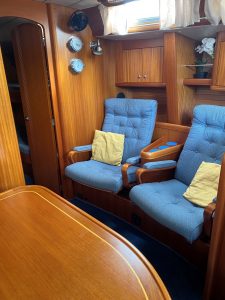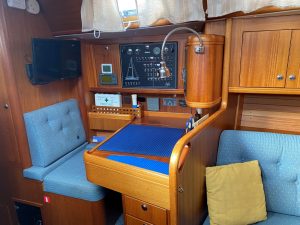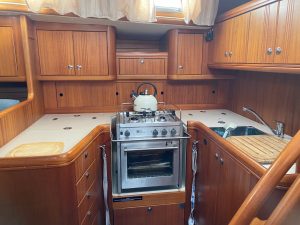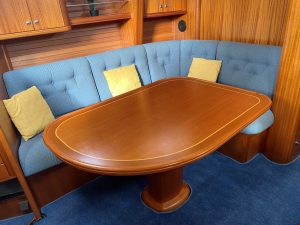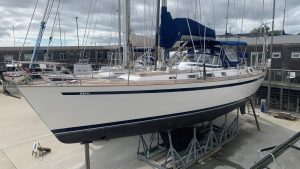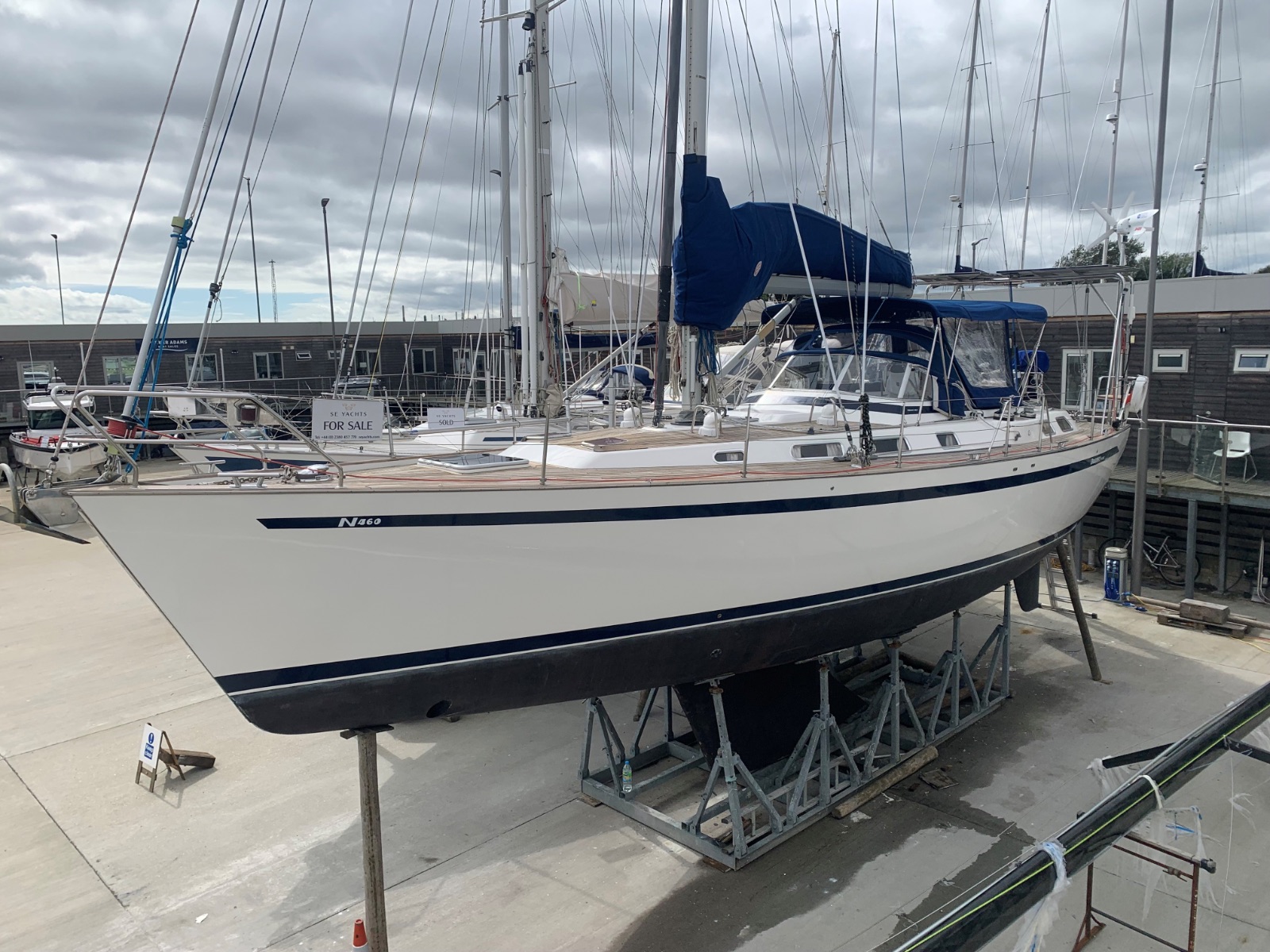
Dragonfly
Najad 460
2002
£350,000
Hamble
For the full specification, please contact us.
The ultimate bluewater cruiser, the Najad 460 is spacious and luxurious with sofa & two armchairs in the saloon and with the master cabin in the rear. She has extra water and fuel tanks, a water maker and generator. With just two owners from new, she was re-rigged in 2019 by Performance Rigging. Her current owners have cruised her doublehanded on the West Coast of Europe and took across to the Caribbean, where she enjoyed 3 seasons, living the dream…
‘A Najad for All Seasons by Cruising World
The Najad 460 offers a lesson in the difference a few extra feet can make. This centre-cockpit sloop makes good use of the additional interior volume as well as the long waterline that guarantees faster passages.
The potential of this Najad for devouring miles. The boat held a consistent 6.8 knots with the apparent wind at 17 knots. When reaching, she averaged over 8 knots, surging to 8.8 knots in the gusts. The boat tacked quickly and balanced well at 45 degrees to the true wind. Without considering its advantageous longer waterline, I felt that the Najad—with a finer bow and flatter underbody—was the best performer of equivalent Malo and HB Rassy boats.
Under power, the 96 -horsepower Yanmar with a Flex-0-Fold prop pushed the boat at 7.8 knots at 2,800 rpm in relatively flat water. At a fuel-sipping 2,200 rpm, the boat cruised at 7 knots. Manoeuvring under power with the Whitlock steering was impeccable.
“This boat had all the right hardware in all the right places” . “It had a big forepeak hatch that you could actually stuff sails into. And it also had a great rig package.”
The twin bow roller at the stem head for handling ground tackle was robust and well designed, and the electric- windlass installation kept the motor completely sealed from the salt air yet fully accessible from below decks for servicing. Details of the stanchion bases illustrate the builder’s focus on deck integrity: Concealed beneath the teak cap rail, the flat bases are bolted through solid laminate at the hull/deck joint, resulting in a watertight seal.
A double-ended mainsheet that leads to a traveller aft of the cockpit allows the boat to be sailed easily from the helm. One end of the mainsheet leads through a line stopper to a winch on the port coaming, the other mirrors this route on the opposite side. The helmsman positioned on the leeward side is within easy reach of the genoa sheet, the mainsheet, and the traveller.
With an Espar forced-air heating system, a well-insulated hull, and the option for canvas that fully encloses the cockpit, the boat I sailed was suited for all sorts of unsavory tasks in high latitudes. But in minding the sunnier desires most sane folks share, Najad also gives ventilation a high priority. With six dorade vents, five deck hatches, and 12 portlights, the boat is designed to catch breezes whether the boat is under way, at anchor, or in a slip. The centre-cockpit arrangement allowed for a large opening hatch and two dorade vents over the aft cabin, often a stagnant corner in some boats.
The well-lit and insulated engine compartment allows easy access to all vital service points on both the engine and an optional generator and plenty of room to work. Skip called the nearly walk-in engine room ‘a work of art.’
The forward-facing nav station occupied the port side, adjacent to an L-shaped dinette. Well suited for family cruising, this model has two separate cabins forward of the mast that could comfortably accommodate four people: two in bunks in a snug starboard cabin, two in a V-berth forward. A well-appointed head with separate shower served these two cabins.
The aft cabin allowed ample headroom in which to move around and had a small settee, plenty of storage, and its own separate head and shower. The comfortable interior is warm and elegant, done in unstained African mahogany with a teak-and-holly sole. It lacks nothing in such seagoing details as fiddles, handholds, and sea berths.
The hull is a hand-laid sandwich construction using Divinycell core, multiaxial fiberglass, and ISO polyester with NGA gelcoat to protect against osmosis. The bilge is reinforced with a longitudinal and transverse floor-plate construction, which supports the mast, engine base, tanks, and cabin soles. The mast is keel stepped and cleverly hidden in joinery work with access panels that allow inspection. The builder stresses the benefits of its additional longitudinal stringers in the hull. Like the Malö, the Najad has a rugged hull/deck joint, one that’s glued, bolted, and glassed together, effectively making the hull of the boat a monocoque structure. For the cruiser who needs the extra living space without sacrificing performance, this is one Swede worth a very close look.’


